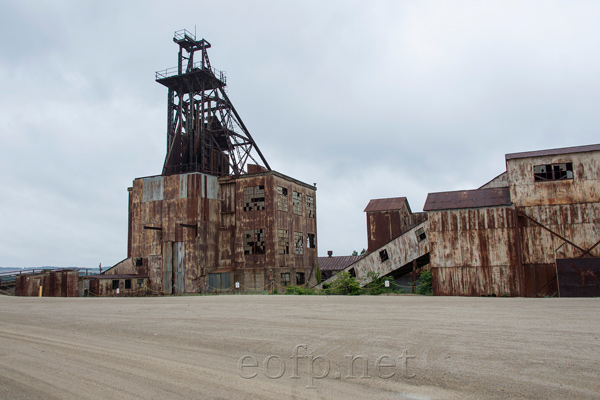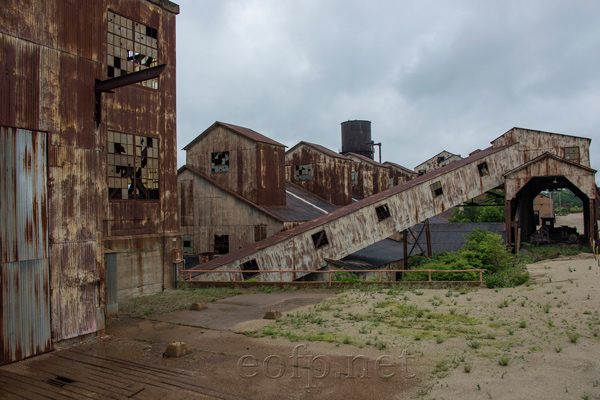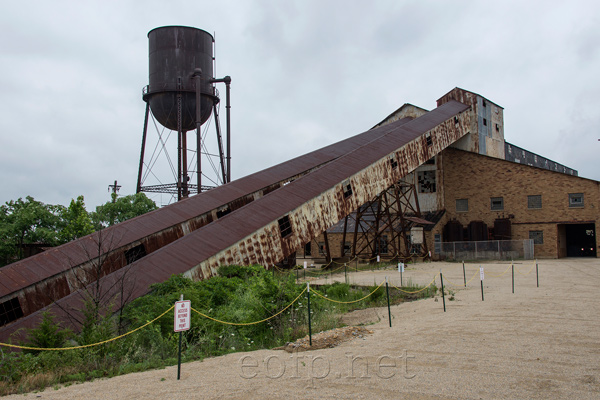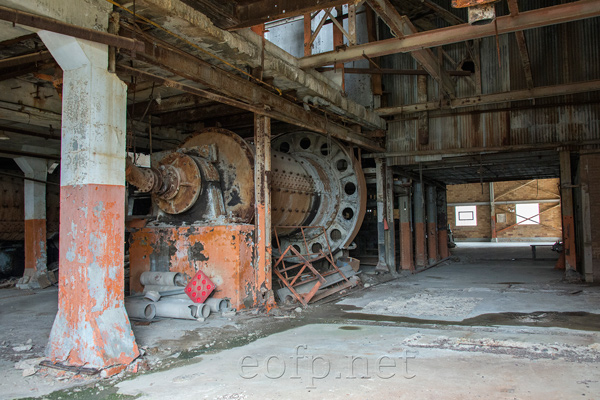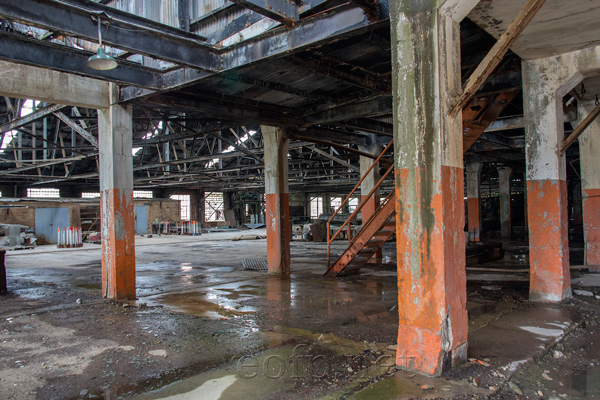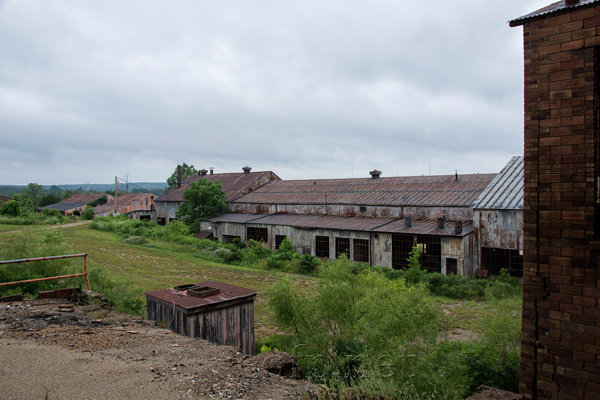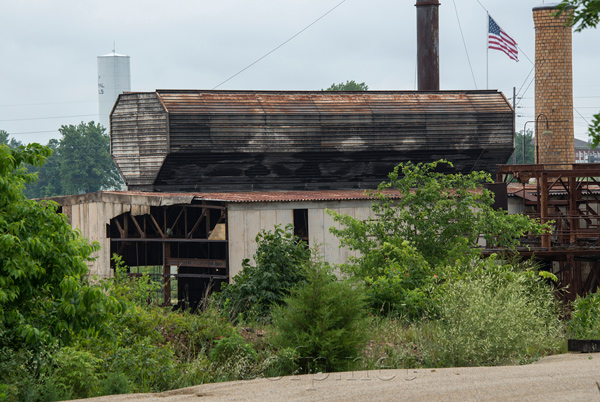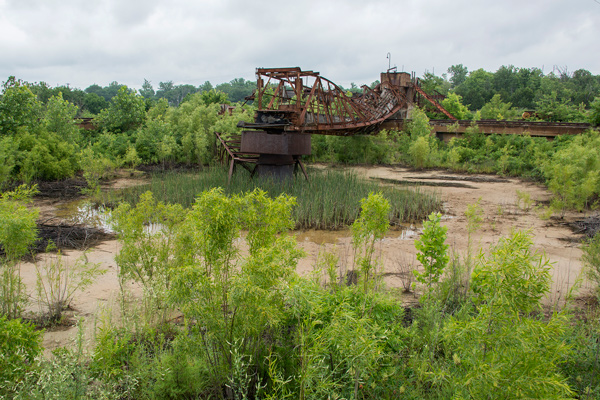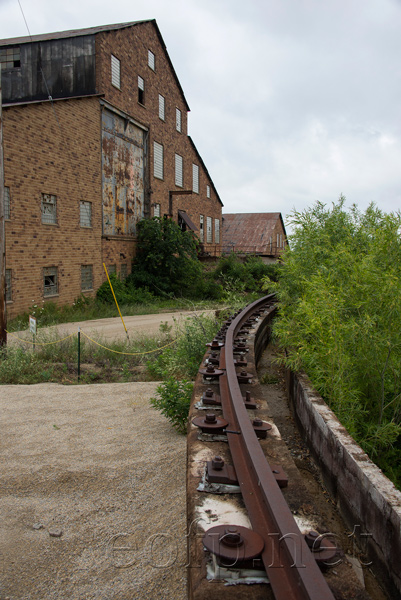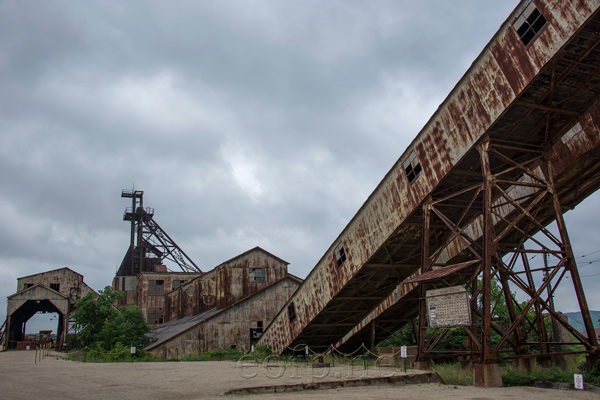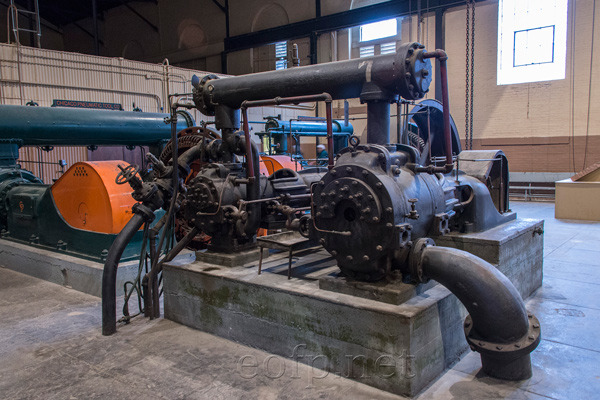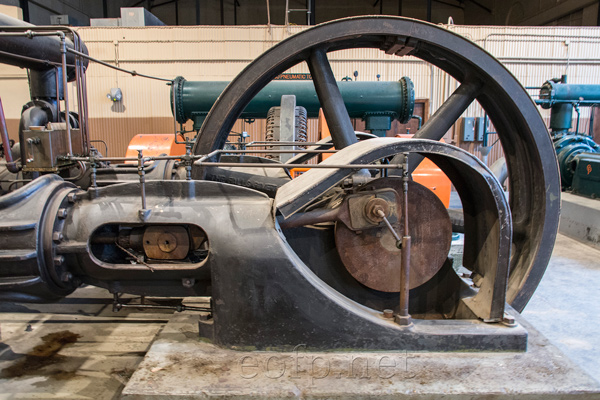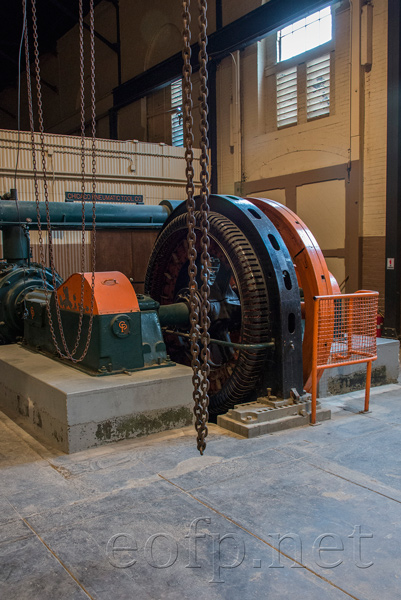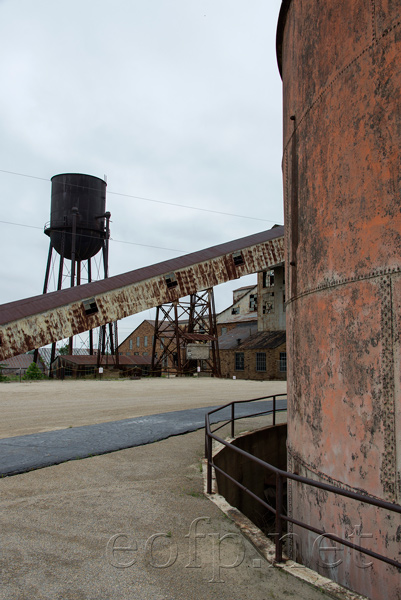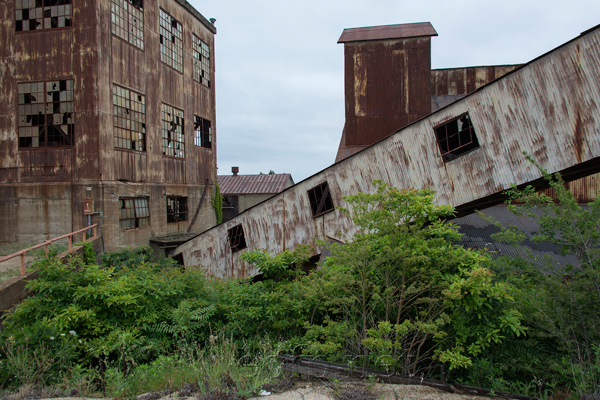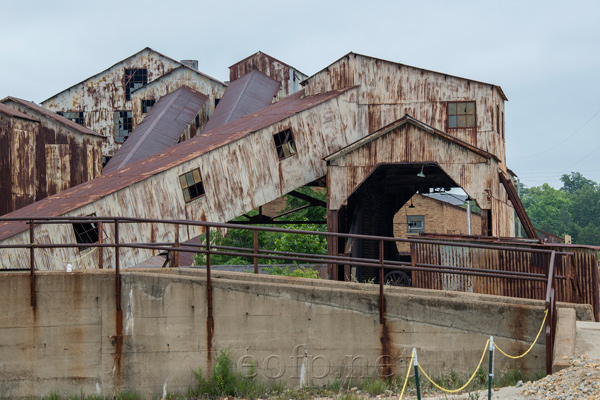Missouri Mines State Historic Site
Missouri Mines State Historic Site
Missouri Mines State Historic Site is a unique industrial preservation park near the town of Park Hills. I had the pleasure of spending the afternoon at the site this summer (2013). The park was developed around Federal Mill No. 3 which was established in 1906 by the Federal Lead company. The mill was acquired by Saint Joseph Lead Company in 1923.
Some might not associate Missouri with hard rock metal mining but the Southeastern Missouri lead district was the single most important source of lead in the US for much of this country's history. Lead from SE Missouri mines was used to produce much of the ammunition used in every major war the US has fought from the civil war to WWII. In addition to the manufacture of ammunition, lead was the most commonly used white pigment (lead paint) and was historically, widely used in piping, solders and batteries. Today lead is less frequently used than in the past but is still widely used in car batteries and is a key industrial metal.
Missouri Mines State Historic Site
Federal Mill No. 3 was built on top of a major lead mine but the mill also processed ore from other regional mines. Federal Mill No. 3 was a concentrating mill. It did not produce lead metal but instead concentrated ore from the mines to reduce the amount of material that had to be shipped to the smelter in Festus Missouri for final processing.
Small scale lead mining in SE Missouri had been on-going during the 18th century French colonial period. The first industrial scale mine in the area started in 1863 in nearby Bonne Terre. Around the turn of the century mines began to open southeast of Bonne Terre along the ore bed (lead belt). The center of mining activity in 1900 had shifted to the area around Park Hills (Flat River) including Federal No. 3. In the 1950s the ore beds beneath Federal No. 3 began to play out. Mining activity at that time shifted southwest of Park Hills to the area around Viburnum. There are currently a few small mines operating in the Viburnum area but nothing as large as the former mines around Park Hills. Tours of the Bonne Terre mines are offered by a company for a fee. Most of the mines in the region including those under Federal No. 3 filled with water when activity ceased. Diving excursions in the flooded chambers and tunnels of the Bonne Terre mine are offered by the company that owns it.
Missouri Mines State Historic Site
Federal Mill No. 3 continued to process ore from other regional mines for a while after activity ceased in the mines beneath it. The mill closed permanently in 1972. In 1975 Saint Joseph Minerals gave the complex and 8,000 surrounding acres of land to the state of Missouri. Since then the surrounding land as been developed as St. Joe State Park. The mill complex is slowly being developed as an interpretive historical park. Currently most of the mill buildings are off limits to visitors. The complex is being preserved in a state of arrested decay. Safety and liability issues make allowing people to wander freely through the complex impractical. A small museum has been developed in the former power plant of the mill. The museum has an interesting collection of period mining equipment and a remarkable collection of geological specimens. I spoke at length with the director of the facility. He was very approachable and knowledgable. The scale of the mill complex is impressive. It includes 25 buildings- several are as tall as a five story building or taller. I know of no other facility of it's size or vintage that is being preserved in the US. I was also impressed with the way it's being preserved. Development of the site has been methodical and tasteful.
Missouri Mines State Historic Site
It's unfortunate but understandable that visitors aren't allowed to tour more of the complex. However a walking path through the complex is being slowly developed as funds allow. People are allowed to walk around one side of the mill and peering into windows and doors is possible. The other side of the mill can be viewed from the entry road. The admission to the museum was only $4. The conversation I had with the director was priceless and the exhibits were very interesting. Perhaps best of all- I was the only person visiting that day.
An interesting history of Federal Mill 3 and the Southeast lead district.
Missouri Mines State Historic Site
Missouri Mines State Historic Site
Missouri Mines State Historic Site
Missouri Mines State Historic Site
Missouri Mines State Historic Site
Missouri Mines State Historic Site
Missouri Mines State Historic Site
Missouri Mines State Historic Site
Missouri Mines State Historic Site
Missouri Mines State Historic Site
Missouri Mines State Historic Site
Missouri Mines State Historic Site
Missouri Mines State Historic Site
Missouri Mines State Historic Site, Page 2
All content on these pages Copyright Mark Hedlund 2012-2019. All rights reserved. Use in school projects and with links on social media is always okay. Please send me an email to request permission for any other use: hedlunch@yahoo.com Non-exclusive commercial publication rights for most photos is $25 per image.

